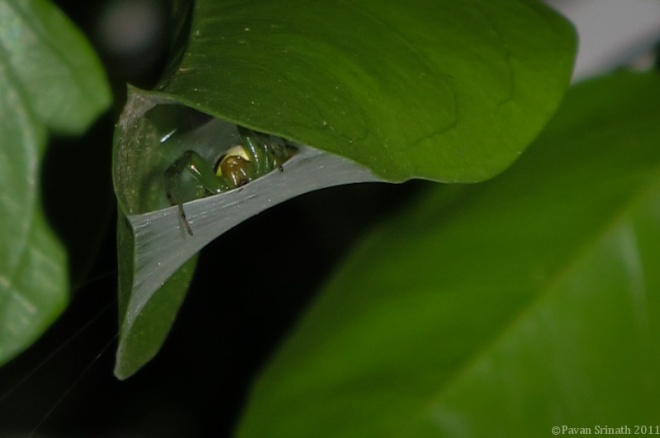Perhaps the most common human interaction with spiders is how we run headlong into their webs. This happens most often with orb webs, as (obviously) a thin two-dimensional web spread across an empty space is most likely to go unnoticed even when we’re looking straight at it.
Sometimes, the saving grace is that you at least spot the spider before you spot the web. Not always, though.
Some orb web spiders like building webs (why they love to build them at the same level as our heads is beyond me,) and then hiding at one corner of it. You won’t notice it on the first pass, but on one of the leaves anchored to the web is a silk sheath, and you just might find something hiding behind it.
These spiders can be quite reluctant to see the light of day, but if you take a small stick or a blade of grass and slip it into the spider’s sanctuary, it jumps out and scrurries to a second hiding space – usually under another of the leaves attached to the web.
This spider is an Araneus mitificus: also known as a Kidney Garden Spider. I’ve come across them a couple of times, and my guess is that the specimen you see above is gravid. They have a beautiful erm… posterior, with large variations in their marking from spider to spider. The underbelly is a brilliant, almost iridiscent green.
The next time you see a large, empty orb web, try looking at everything that the web connects to. You’ll find a spider hiding somewhere. And this critter is worth taking the time to find.





